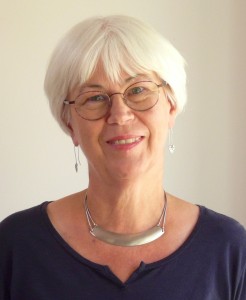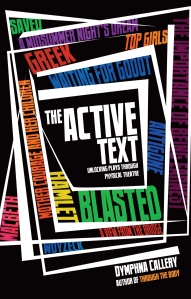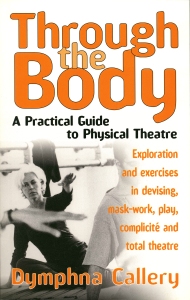 Dymphna Callery’s Through the Body: A practical guide to physical theatre is beloved of a generation of drama students. But have we ghetto-ised ‘physical theatre’ in an unhelpful way? In her new book published today, The Active Text, she looks at how physical theatre techniques can be used to unlock scripted plays, and inject new life into even the most familiar of texts…
Dymphna Callery’s Through the Body: A practical guide to physical theatre is beloved of a generation of drama students. But have we ghetto-ised ‘physical theatre’ in an unhelpful way? In her new book published today, The Active Text, she looks at how physical theatre techniques can be used to unlock scripted plays, and inject new life into even the most familiar of texts…
Recently, several productions drawing rave reviews have challenged notions of naturalism, or at least received ideas about naturalistic plays. The Flemish director Ivo van Hove’s extraordinary staging of Arthur Miller’s A View From the Bridge is a case in point – it transfers to the West End this spring after a sell-out run at the Young Vic. In this production barefoot actors move within a minimalist black box set, perch on its edges rather than on chairs round a table in the Carbone apartment; the action is virtually underscored by Fauré’s Requiem with tension ratcheted up during family dinners by the ticks of a metronome. Van Hove has turned the play inside out; his streamlined aesthetic makes the words spoken more vibrant, the action more vital, the acting more resonant.

Luke Norris, Emun Elliott, Phoebe Fox and Mark Strong in A View from the Bridge. Photo by Jan Versweyveld
It would be perverse to refer to van Hove’s production as ‘physical theatre’, yet it is clearly non-naturalistic. Or rather, is not naturalism as we tend to think of it. All the trappings of our received ideas about naturalistic style have been stripped away. Miller’s stage directions for the design that seem so integral to the play in reading do not feature; costumes do not reflect the 1950s when the play is set. And the tragic story and its brutal outcome are all the more powerful and poignant.
So is there a label to suit such a production style? Labels, rather like comparisons, can be odious – though attaching labels to distinguish styles is often considered important. They provide some kind of certainty, a sort of comfort blanket that tells us what kind of play we are considering. Uncertainty makes us feel uncomfortable. But methods of judging and defining style can be problematic, the criteria used debateable. And labels can certainly outlive their currency. Frantic Assembly get frustrated at being labelled physical theatre, for example. They prefer to describe their work as ‘exciting contemporary theatre for new audiences’.

A View from the Bridge: Phoebe Fox (Catherine), Mark Strong (Eddie) and Nicola Walker (Beatrice). Photo by Jan Versweyveld
Physical theatre is frequently considered distinct from text-based theatre. Yet many companies bracketed as physical theatre produce plays. Frantic Assembly, Kneehigh and Complicite are examples of companies who work with playwrights, use scripted texts and create work that tests the boundaries of stylistic conventions. However, their process depends on working collaboratively using strategies associated with devising rather than following the traditional routes associated with text work. And it is this way of working that underpins my new book The Active Text, an approach more akin to collective storytelling, rooted in an imaginative use of space and the kind of physical listening between players that means their attention is focused outwards.
We meet a play on the page largely through dialogue, and performance seems to rest on how we flesh out the words. Those words are often the starting point – picked over at a desk or sitting on chairs round a table. Character behaviour is analysed and conclusions drawn about them. Then the words they speak get fleshed out by adding actions once everyone pushes back their chair. Yet dialogue is what David Mamet calls ‘sprinkles on the ice-cone’. It is the dynamic and kinaesthetic signals embedded in the text that bring it to life, its image structure in performance is as powerful as the words spoken. A play should be an experience for the senses and the minds of an audience. Unearthing the fabric of actions and images that determine what happens – and what an audience will see – is where it begins. And in my experience that doesn’t start with a read-through or sitting in a chair.
A traditional read-through is not the automatic recourse of early rehearsals for many directors, and even when it happens, actors don’t necessarily read the part they’ve been cast. Many contemporary directors start with anything but the text. Actors who have developed a capacity for play thrive in this context. And ‘play’ is at the heart of the improvisatory channels to discovering the style of a play, one which may challenge received ideas about what a play is supposed to look like in performance.
When teaching acting and directing for scripted texts I find applying principles of ‘play’ produces far more energised and vital results than following the conventional path of studying characters and what they say. Using improvisation and games to dig into a play before dealing with dialogue, and searching out physical means of expressing any subtext takes players to a more vital level and elicits more energised performances. And everyone feels they are having fun even when the text under scrutiny is serious.
How do you start using the approach I’m talking about? The notion of unlocking text via playful means is what underpins the approaches to working with text that form the body of The Active Text. Those familiar with my previous book Through the Body will find the exercises framed in similar terms, addressing a group rather than an individual actor or director, with an open stage/spectator relationship in operation which both prepares actors for an eventual audience and provides opportunities for learning through watching.
There are thirteen plays referred to throughout for illustration purposes, including A View from the Bridge, Woyzeck and Antigone – plays readers may already be familiar with. They are all plays I’ve used in studio or workshop contexts, or directed, so the exercises have been tested out. There are references to productions that embody some of the ideas behind or have influenced the approaches suggested, and also references to playwrights, practitioners, directors and actors whose words offer valuable insights into the rehearsal process. Putting their ideas into practice has invigorated my rehearsals and workshops – and there’s nothing more rewarding than the surprise of discovering something new or different about a play you thought you knew.
 The Active Text: Unlocking Plays Through Physical Theatre by Dymphna Callery is out now, published by Nick Hern Books.
The Active Text: Unlocking Plays Through Physical Theatre by Dymphna Callery is out now, published by Nick Hern Books.
To buy your copy at a 20% discount – no voucher code required – click here.
Visit www.dymphnacallery.co.uk for more details about her work.
